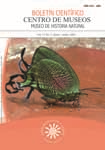Authors
Abstract
Cultural valuation looks to identify the perception of the educational community about the uses and importance attributed to the wildlife in captivity in three districts of Pereira. It was observed, through perceptive reactions, that the communities recognized all the related fauna species in the potential listing of the wild fauna species subject to uses by humans. At least one use was attributed to all the identified species; most species were familiar to the community. The results showed that 7 mammal, 6 bird, 8 reptile, and an amphibian species are the most important, since they have the seven categories of uses proposed in the research’s methodology, the Local Use Value Index (LUVI), defined as the sum of all the types of use for a species. With the Pebble Distribution Method (M.D.P.) the most important uses given to the wildlife were identified; for mammals being nutritious and commercial uses; for birds being commercial, ornamental and nutritious uses; and for reptiles being commercial and ornamental uses.
Keywords
References
CARDER, CORANTIOQUIA, CIFFRI., 2002. Manual de Fauna Silvestre: Guía para Decomisos de Especies y Productos de Fauna Silvestre Colombiana. Pereira: Fondo Editorial de Departamento de Risaralda.
DANE, 2005. CENSO Poblacional.
DEFLER, T., 2003. Primates de Colombia. Bogotá: Conservación Internacional.
EMMONS, L.H. & FEER, F., 1997. Neotropical Rainforest Mammals. Sec Ed. University of Chicago Press.
HILTY, S.L. & BROWN, W.L., 1986. A Guide to the Birds of Colombia. Princenton Un. Press.
INSTITUTO DE INVESTIGACIONES ALEXANDER VON HUMBOLDT., s.f.- Prioridades nacionales de conservación de fauna. Documento de trabajo.
JARAMILLO, L., 1993. Aves de Colombia 167 Especies… ¡Déjelas Volar! Santafé de Bogotá: ATA Fondo Filantrópico.
NOTIZOO, 2004. Sociedad de mejoras de Pereira. Publicación del Boletín No. 3 - febrero.
RENJIFO, L., AMAYA, J., CATAN, G., FRANCO, A. & LÓPEZ, B., 2002. Libro Rojo de las Aves de Colombia. Serie Libros Rojos de Especies Amenazadas de Colombia. Bogotá, Colombia: Instituto de Investigación en Recursos Biológicos Alexander Von Humboldt, Ministerio del Medio Ambiente.
RODRÍGUEZ, J. & HERNÁNDEZ, J., 2002. Loros de Colombia. Bogotá: Conservación Internacional.
RODRÍGUEZ, J., ROJAS, F., AREOZA, D., & GONZALEZ, A., 2005. Loros, Pericos y Guacamayas Neotropicales. Bogotá: Conservación Internacional.
SAO, 2003. Aves del Valle de Aburrá. Segunda edición revisada. Medellín: Área Metropolitana del Valle de Aburrá, Sociedad Antioqueña de Ornitología.
TRUJILLO, F., RODRÍGUEZ, J., TIRIRA, D. & HERNÁNDEZ, A., 2005. Mamíferos Acuáticos y Relacionados con el Agua Neotropical. Bogotá: Conservación Internacional.
ULLOA, A., 1996. Manejo Tradicional de la Fauna en Procesos de Cambio: Los Embera en el PNN Utría. En: Seminario Investigación y Manejo de Fauna para la construcción de Sistemas Sostenibles. Calí, Colombia: CIPAV.

 PDF (Español)
PDF (Español)
 FLIP
FLIP


















